
LOYALTY CODE:
The paper code cannot be redeemed when browsing in private/incognito mode. Please go to a normal browser window and enter the code there

LOYALTY CODE:
The paper code cannot be redeemed when browsing in private/incognito mode. Please go to a normal browser window and enter the code there
This content is copyright protected!
However, if you would like to share the information in this article, you may use the headline, summary and link below:
Title: Dramatically cutting nitrogen rates on a dairy farm in Co Kildare
Where this Kildare farmer was applying 24 units of nitrogen/ac to his grazing rotation he is moving to 10 units/ac.
https://www.farmersjournal.ie/dramatically-cutting-nitrogen-rates-on-a-dairy-farm-in-co-kildare-588265

ENTER YOUR LOYALTY CODE:
The reader loyalty code gives you full access to the site from when you enter it until the following Wednesday at 9pm. Find your unique code on the back page of Irish Country Living every week.

CODE ACCEPTED

You have full access to farmersjournal.ie on this browser until 9pm next Wednesday. Thank you for buying the paper and using the code.

CODE NOT VALID
Please try again or contact us.
For assistance, call 01 4199525
or email subs@farmersjournal.ie
Sign in

Incorrect details
Please try again or reset password
If would like to speak to a member of
our team, please call us on 01-4199525
Reset
password
Please enter your email address and we
will send you a link to reset your password

If would like to speak to a member of
our team, please call us on 01-4199525
Link sent to
your email
address
![]()
We have sent an email to your address.
Please click on the link in this email to reset
your password. If you can't find it in your inbox,
please check your spam folder. If you can't
find the email, please call us on 01-4199525.
![]()
Email address
not recognised
There is no subscription associated with this email
address. To read our subscriber-only content.
please subscribe or use the reader loyalty code.
If would like to speak to a member of
our team, please call us on 01-4199525
 This is a subscriber-only article
This is a subscriber-only article
Update Success !








The requirement to reduce fertiliser use is now a reality, but should not be seen as a negative. Improved fertiliser use efficiency can increase profits, reduce losses to the environment and result in increased yields in some cases.
Kenny Roberts is one farmer who is actively trying to reduce nitrogen rates on his farm. His target is to reduce nitrogen use by approximately 50% in the coming years.
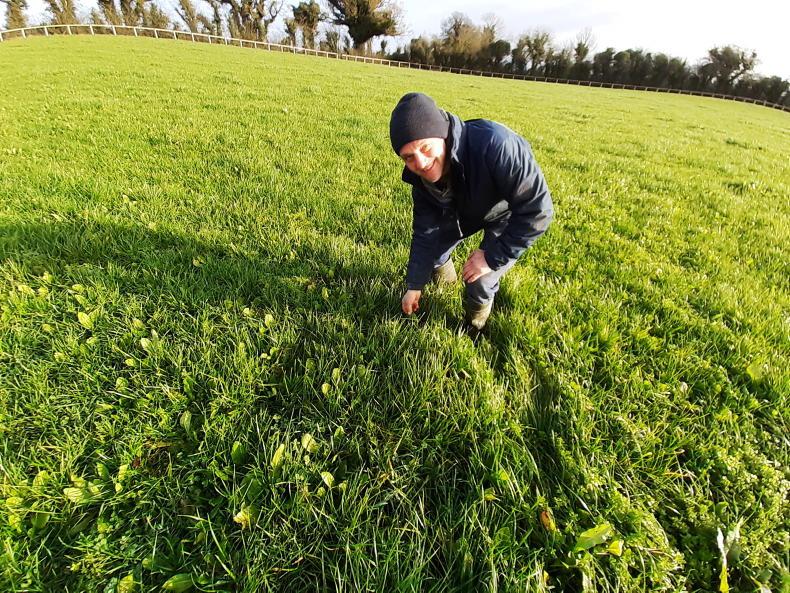
He’s in the early stages of the journey and is using a combination of methods to reach this target; chief among them is the application of foliar nitrogen, improving soil health and planting multispecies swards.
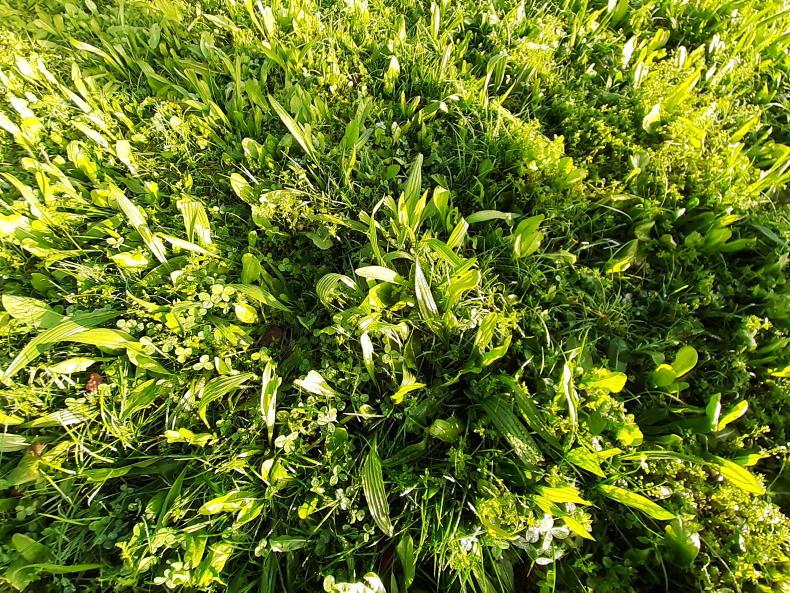
The Kildare man has 127 Montbéliarde cows grazing a block of 127 acres, along with in-calf heifers and calves grazing on the block at certain times of the year. Currently at 2.6LU/ha, Kenny had been taking a fairly standard approach to grassland production, applying 84 units/ac to silage ground in the spring and 24 to 27 units/ac in the grazing rotation.
In 2021, he plans to milk 140 cows off his grazing platform which is a mix of multispecies swards and perennial ryegrass-based swards. The stocking rate will hit 2.8LU/ha on the platform at this stage and aiming to produce 15t DM/ha, he will need to bring in roughly 50% of his cows’ winter silage needs from outside blocks. Kenny hopes to maintain his milk solids production close to the 500kg/cow mark. He feeds approximately 750kg of ration per cow.
His farm is divided into a number of blocks and he is increasing his cow numbers as he drops beef numbers.
Multispecies swards
Kenny is gradually moving to multispecies swards on his farm. The first multispecies swards were sown in April 2020 and, despite being hit by drought, they established well. The next swards were planted in August and grazed lightly.
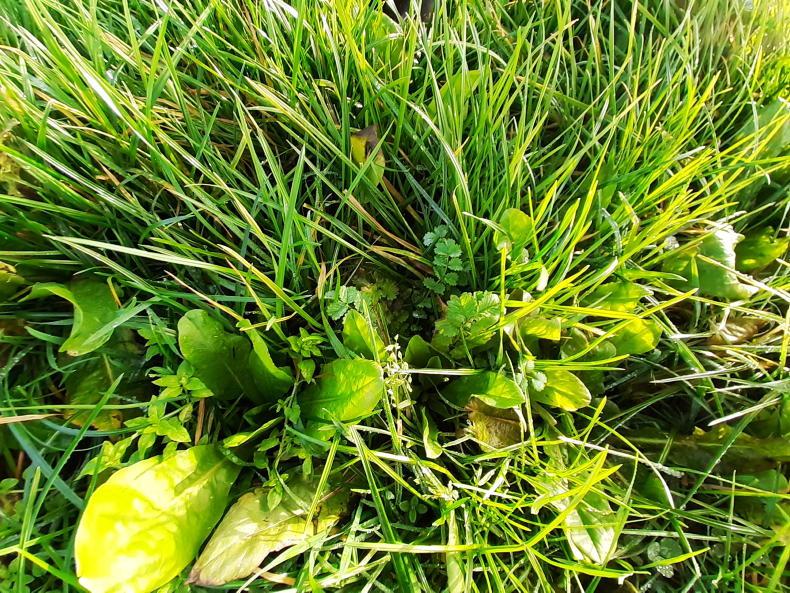
Weed control is a worry for many, but he said that topping put an end to weeds such as redshank, while chickweed faded out and he will have to spot-spray some thistles.
On average, across the year, Kenny is producing 13t DM/ha. He sees no difference in yield across the multispecies and the conventional swards, but farming on the Kildare-Offaly border means the wetter ground does not perform at the shoulders of the year.
A mistake while stitching in plantain to a sward led to increased levels of plantain on the headlands of one field and the cows flocked to it. After that, Kenny was sold and made the move to multispecies.
From speaking to other farmers with multispecies swards, he hopes to apply approximately 1.5 bags/ac of urea in a split application in spring and, after this, he plans on applying little other nitrogen.
Two different approaches to silage
On this season’s silage crop, which was on standard perennial ryegrass paddocks, Kenny also took two different approaches. The first was a standard application of cut sward at a rate of 84 units of N/ac (3.5 bags).
The second approach saw 2,500 gallons/ac of slurry applied along with 36 units of urea, 25 units of which were applied in foliar form (this was available through trials in the Danú project). Kenny did not record any difference in yield across the silage ground.
He is also using additives in his slurry and has tried different products, all of which avoid a crust on top of the slurry, make agitation a lot easier and can increase nutrient availability.
Foliar nitrogen
Foliar nitrogen is becoming an integral part of the plan in reducing nitrogen rates on the farm. As part of the Danú Group, the Kildare man uses foliar nitrogen on trial plots, which he mixes with trace elements and a carbon source such as molasses.
Kenny explains that the carbon source is feeding the soil biology and, in turn, unlocking the nutrients from the soil. He says that on one area of ground, which was low in P, he applied 16% Super Triple Phosphate, but this was not showing up in his plant sap analysis tests.
The phosphorus was locked up and Kenny hopes that by increasing biological activity in the soil more nutrients will be released.
In 2020, Kenny applied 15 units of foliar nitrogen/ac to his perennial ryegrass-based swards in place of the traditional bag of CAN or pasture sward throughout his grazing rotation. In time, he plans to apply just 10 units of N/ac. Last season, he applied just six units of N/ac to some paddocks and this was too little.
He noted that nitrogen rates need to be reduced gradually and, as they do, clover will gradually come back into the sward and contribute to the sward’s nitrogen use. Kenny has seen clover levels increase on the farm since reducing nitrogen rates.
As Kenny applies carbon and trace elements with the foliar nitrogen, this should also bring balance and increased microbial activity to the soil, helping to release more nitrogen.
The product needs to be applied to the leaf for best effect and so a grass cover of 500kg to 700kg DM/ha is needed.
Plant sap analysis
Kenny is a participant in the Danú Farming Group (an EIP project) and has trial plots on his farm.
The focus in these paddocks is on foliar feed and nitrogen reduction.
Plant sap analysis was carried out three times last year and, in the future, Kenny hopes to build a picture for certain times of the year as different nutrients will be low in spring compared with late summer, for example.
The reduction in nitrogen has seen clover come back into the swards which will see more nitrogen fixation occur. A balance in soil nutrients and increase in microbial activity will also help to release nitrogen from the soil.
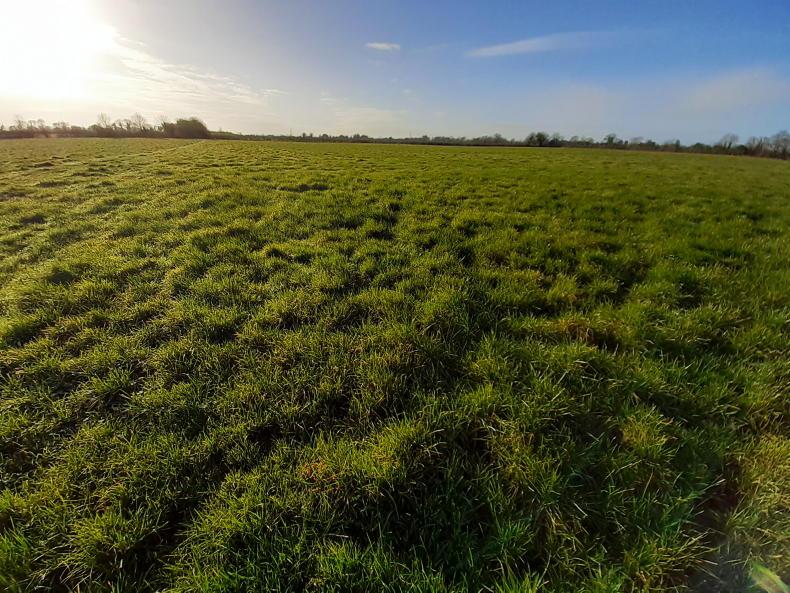
Magnesium and boron are two elements which Kenny found to be lacking and is now applying to his grass, along with seaweed-based products, in some cases, to stimulate the plant’s metabolism.
Investment for the future
Kenny’s plan is to reduce fertiliser use by building up soil health and while he is investing in the infrastructure at present, he sees this paying off in the long run.
If he gets his soil actively working and releasing nutrients, his fertiliser usage should naturally decline. The multispecies swards will not only add biodiversity to his soil, but will also help with soil structure.
As the soil comes to life, Kenny hopes to see an improvement in cow health and a reduction in the amount of minerals he gives to his herd.
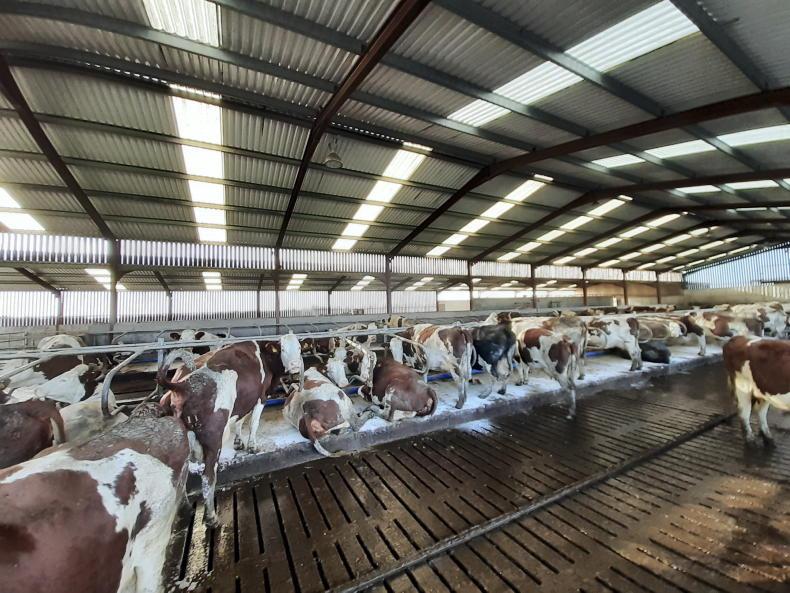
Danú Farming Group
Soil health will be monitored over time as part of the Danú project. Earthworm counts, infiltration tests and an examination of the soil’s fungi and bacterial levels will all be measured numerous times throughout the programme.
Kenny noted that there were eight to nine earthworms in a spade on his farm last season. The aim is 20. Even measurements like this can open your eyes to the health of your soil.
What’s in the multispecies sward?
Ryegrass; white clover; red clover; timothy; cocksfoot; chicory; plantain; sheep’s burnet; sheep’s parsley; yarrow; sainfoin.
The approach Kenny is taking is not for everyone, but it is clear that he is developing a real understanding of the soil he is farming and what can help it most.
He is making lots of little changes which he sees as an investment to improve soil health, reduce fertiliser use and, ultimately, improve the farm’s profitability.
There is no denying that many agricultural soils in Ireland have become depleted and are not performing to their best as a result. As Kenny explains, P was locked up on his farm and he identified the problem through plant sap analysis.
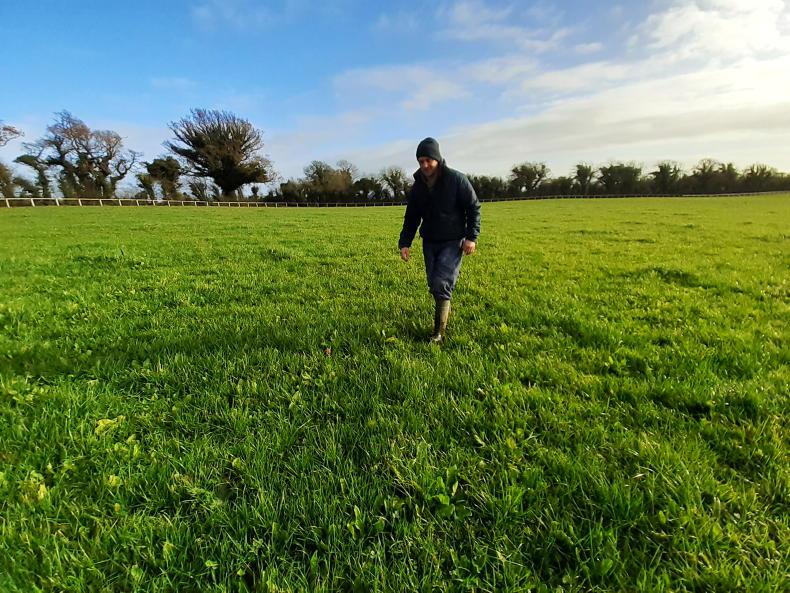
Across these wintry days, it doesn’t take long to do a simple thing such as dig a hole on your farm and see what’s happening. How far are the roots travelling? How many worms are active? Is the soil a rich colour or does it look depleted and in need of farmyard manure?
Cutting fertiliser use, increasing cow numbers and staying on the same grazing block are all ambitious targets, but efficiency targets are now going to have to be met by all in the coming years as a result of legislation but, more importantly, from a farm sustainability perspective.




SHARING OPTIONS: